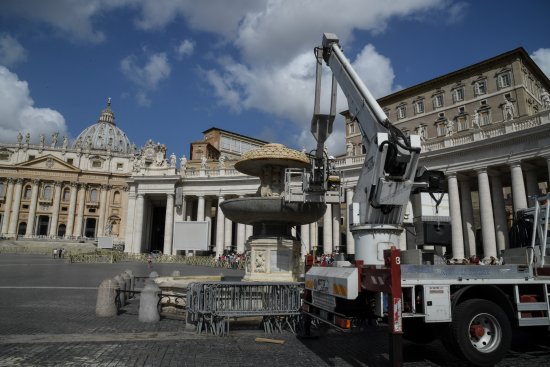
The water-saving move is 'in line with the teachings of Pope Francis,' the Vatican says
The Vatican has turned off all fountains, including two Baroque masterpieces in St. Peter’s Square and interior fountains in the Vatican Gardens, to save water due to a prolonged drought that has been affecting almost two-thirds of Italy’s farmland as well as its capital, Rome.
The water-saving move is “in line with the teachings of Pope Francis,” according to a statement on the Vatican website. Around 100 fountains in total have been switched off, according to Reuters. It is the first time Vatican authorities can remember being forced to turn off the fountains, a spokesperson for the Vatican told the news agency.
“This is the Vatican’s way of living solidarity with Rome, trying to help Rome get through this crisis,” Greg Burke told Reuters TV. “This decision is very much in line with the pope’s thinking on ecology: you can’t waste and sometimes you have to be willing to make a sacrifice.”
Rome has received 72% less rain than normal this month, and received 74% less than normal in June. The water shortages have cost Italian agriculture some €2bn ($2.3bn) and a state of emergency has been declared in two northern Italian provinces, the BBC reports. The capital is currently facing water rationing after a halt was ordered on pumping water from nearby Lake Bracciano.
[Reuters]